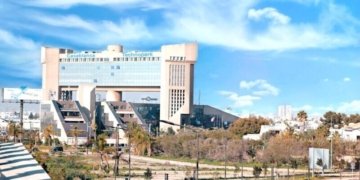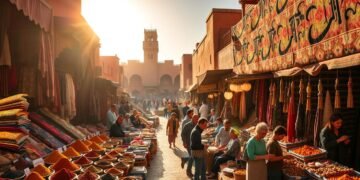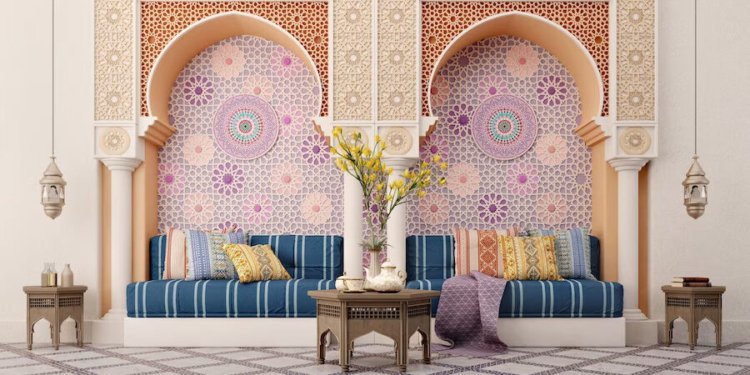Moroccan architecture is a stunning blend of various cultural and historical influences. The country’s unique geographic location has made it a melting pot of design styles, resulting in an exquisite architectural heritage. This article aims to provide an in-depth exploration of Moroccan architecture, its history, styles, and features.
A Brief History of Moroccan Architecture
Moroccan architecture can be traced back to the pre-Islamic period when the Amazigh people built houses made of earth and stones. With the arrival of Islam in the 7th century, Moroccan architecture started to flourish, taking inspiration from various Islamic dynasties, including the Umayyads, Almohads, and Marinids.
During the 16th century, Moroccan architecture experienced a significant transformation under the Saadian dynasty, where they incorporated Andalusian and Ottoman influences. In the 19th century, French colonialism introduced modernist architecture, leading to a blend of traditional and modern styles.
Moroccan Architectural Styles
Moroccan architecture comprises different styles that reflect the various historical and cultural influences that shaped the country’s heritage. Here are the most prominent styles of Moroccan architecture:
Islamic Architecture
Morocco’s Islamic architecture is characterized by its intricate geometric designs, calligraphy, and arabesques. This style is best exemplified by the Koutoubia Mosque in Marrakech, which was built during the Almohad dynasty.
Berber Architecture
Berber architecture is known for its simplicity and functionality. The Berber people constructed houses made of earth and stones that blended with the surrounding landscape. The Berber style is still present in the Atlas Mountains, where houses are built using the same ancient techniques.
Andalusian Architecture
Andalusian architecture, also known as Moorish architecture, is a fusion of Islamic and European styles. This style is characterized by its horseshoe arches, domes, and colorful tiles. The Bahia Palace in Marrakech is an excellent example of Andalusian architecture.
Jewish Architecture
Jewish architecture in Morocco is a reflection of the Jewish community’s long history in the country. This style is characterized by its ornate decorations, arches, and courtyards. The El Mellah neighborhood in Marrakech is an excellent example of Jewish architecture.
Elements of Moroccan Architecture
Moroccan architecture features several elements that make it unique and timeless. These elements include:
Zellige
Zellige is a form of Moroccan mosaic tilework made from geometrically cut glazed ceramic tiles. This decorative art is used in several architectural features such as fountains, walls, and floors.
Tadelakt
Tadelakt is a waterproof plastering technique that originated in Morocco. This traditional technique is used to create a smooth, shiny surface on walls, ceilings, and floors.
Mashrabiya
Mashrabiya is a type of wooden lattice window screen that provides privacy while allowing airflow and light. This architectural element is commonly found in Moroccan houses and buildings.
Riad
A riad is a traditional Moroccan house built around a central courtyard or garden. Riads feature lush greenery, fountains, and intricate tilework.
Kasbah
A kasbah is a fortified citadel that was used as a residence for wealthy families or a stronghold for military purposes. Kasbahs are often made of earthen materials and feature narrow streets and alleys.
Medersa
A medersa is a traditional Islamic school that provides education in Islamic studies. Moroccan medersas are known for their intricate tilework, fountains, and courtyards.
Minaret
A minaret is a tall tower that is part of a mosque. The tower is used to call Muslims to prayer and is often adorned with intricate designs.
Bab
A bab is a gate that leads to a walled city or fortification. Moroccan babs feature ornate decorations, arches, and geometric designs.
Influences of Moroccan Architecture
Moroccan architecture has been influenced by various cultural and historical factors, including:
Geographical Location
Morocco’s location at the crossroads of Africa, Europe, and the Middle East has made it a melting pot of design styles. Moroccan architecture is a fusion of Berber, Islamic, Andalusian, and European styles.
Islamic Art and Architecture
Moroccan architecture has been heavily influenced by Islamic art and architecture. Moroccan architects have incorporated Islamic geometric designs, calligraphy, and arabesques into their work.
Andalusian Architecture
Andalusian architecture, which was introduced by the Moors during their occupation of Spain, has had a significant impact on Moroccan architecture. This style is characterized by its horseshoe arches, domes, and colorful tiles.
French Colonialism
French colonialism in Morocco during the 19th and 20th centuries introduced modernist architecture to the country. This led to a fusion of traditional and modern styles in Moroccan architecture.
Famous Examples of Moroccan Architecture
Morocco is home to several iconic architectural landmarks that reflect the country’s rich heritage. Here are some of the most famous examples of Moroccan architecture:
Hassan II Mosque
The Hassan II Mosque is one of the largest mosques in the world and is located in Casablanca. This stunning mosque features intricate tilework, marble floors, and a massive minaret that stands at 210 meters tall.
Bahia Palace
The Bahia Palace is a 19th-century palace in Marrakech that features Andalusian architecture. The palace features lush gardens, ornate decorations, and stunning tilework.
Koutoubia Mosque
The Koutoubia Mosque is a beautiful example of Moroccan Islamic architecture. This mosque, located in Marrakech, features a tall minaret and intricate geometric designs.
Majorelle Garden
The Majorelle Garden is a lush botanical garden in Marrakech that was designed by French artist Jacques Majorelle. The garden features vibrant blue buildings, cacti, and exotic plants.
Royal Mansour Marrakech
The Royal Mansour Marrakech is a luxurious hotel that features traditional Moroccan architecture. The hotel features a stunning courtyard, intricate tilework, and private riads.
Sustainable Features of Moroccan Architecture
Moroccan architecture has several sustainable features that make it eco-friendly and energy-efficient. These features include:
- Courtyards and gardens that provide natural cooling and ventilation
- Earthen materials that provide insulation and reduce energy consumption
- Water-saving techniques such as tadelakt and zellige reduce water usage
- Use of natural light and ventilation through the use of mashrabiya screens and open-air courtyards
Future of Moroccan Architecture
Moroccan architecture continues to evolve as architects and designers find new ways to incorporate traditional design elements into modern structures. The future of Moroccan architecture may include:
- A continued focus on sustainable design and green building practices
- A fusion of traditional Moroccan design elements with modern styles and technologies
- An emphasis on the use of local materials and traditional building techniques
- Preservation and restoration of historic buildings and landmarks
Last but not least
Moroccan architecture is a beautiful and unique style that reflects the country’s rich cultural and historical heritage. From the intricate tilework of medersas to the lush gardens of riads, Moroccan architecture is a feast for the eyes. As the country continues to develop and grow, we can expect to see even more stunning examples of this timeless style.
FAQs
The Hassan II Mosque in Casablanca is one of the most famous examples of Moroccan architecture.
French colonialism in Morocco introduced modernist architecture to the country, which led to a fusion of traditional and modern styles in Moroccan architecture.
Moroccan architecture incorporates several sustainable features, including the use of courtyards and gardens for natural cooling and ventilation, earthen materials for insulation, and water-saving techniques such as tadelakt and zellige.
A kasbah is a fortified citadel that was used as a residence for wealthy families or a stronghold for military purposes.
A medersa is a traditional Islamic school that provides education in Islamic studies. Moroccan medersas are known for their intricate tilework, fountains, and courtyards.


























